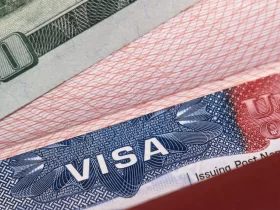Going to Mexico is always a fun idea. You can go to the dentist, get a haircut, and eat an amazing gourmet meal for pennies on the dollar if you were to do that in the United States.
The dollar was worth $20 pesos, which meant $1 USD fish tacos and $2 USD Tecate Beer.
Nowadays, the Mexican Peso has gotten a lot stronger, close to $16 pesos per dollar (lowest in a long time) and we can see it in the border. Automatically everyone in Mexico has more spending power with their pesos, therefore longer waiting times in the lines to cross the border.
A stronger peso compared to the dollar can have a significant impact on the border economy, particularly in regions where cross-border trade and tourism are significant contributors. Here are some of the ways a stronger peso can affect the border economy:
Export Competitiveness: A stronger peso makes the country’s exports more expensive for foreign buyers, potentially reducing demand for goods and services from the border region. This can affect industries that heavily rely on exports, such as manufacturing, agriculture, and textiles.
Import Costs: Imports become cheaper when the local currency strengthens against the dollar. While this can benefit consumers who can access cheaper imported goods, it might negatively impact domestic producers who face increased competition from cheaper foreign products.
Cross-Border Shopping and Tourism: A stronger peso can attract cross-border shoppers and tourists from the neighboring country, as their currency’s purchasing power increases when converted to the stronger peso. This can boost local retail, hospitality, and tourism sectors.
Labor and Employment: Industries that depend on cross-border labor, such as agriculture and seasonal work, might see labor costs rise as wages in terms of the stronger peso become more attractive to foreign workers. Conversely, industries that export labor might face challenges as foreign employers might find it more expensive to hire workers from the stronger currency country.

Inflation and Consumer Prices: Cheaper imports due to a stronger peso can contribute to lower inflation as imported goods become more affordable. This can have mixed effects on the local economy, as lower inflation can benefit consumers but might pose challenges to local producers if they face increased competition from cheaper imported goods.
Investment: A stronger peso can lead to lower costs for foreign investors looking to establish operations in the country. On the other hand, domestic companies might find it less competitive to invest abroad due to the higher relative cost of the stronger peso.
Balance of Payments: A stronger peso might help improve a country’s trade balance by reducing the cost of imports and making exports less competitive. However, this can also depend on various other economic factors and trade dynamics.
It’s important to note that the actual impact of a stronger peso vs. dollar will depend on a variety of factors, including the overall economic health of the countries involved, trade policies, inflation rates, interest rates, and other global economic conditions. Additionally, these effects can be complex and interconnected, leading to both positive and negative outcomes for different sectors within the border economy.








































Leave a Reply